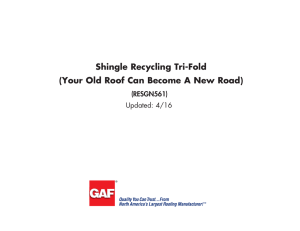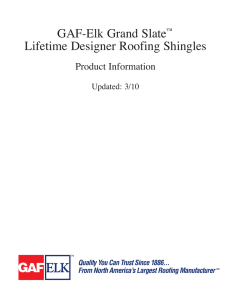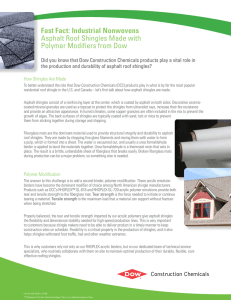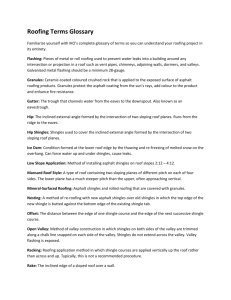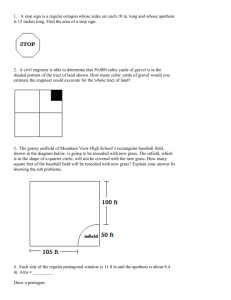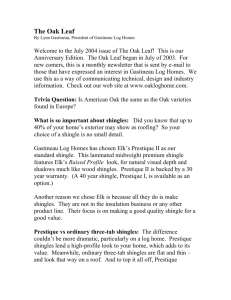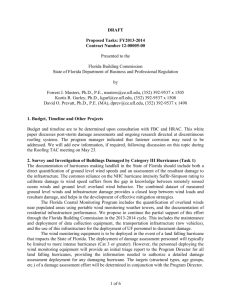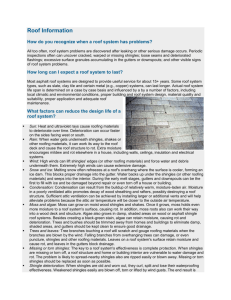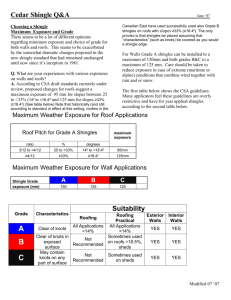Division 7 – Thermal & Moisture Protection Shingled Roof Installation
advertisement
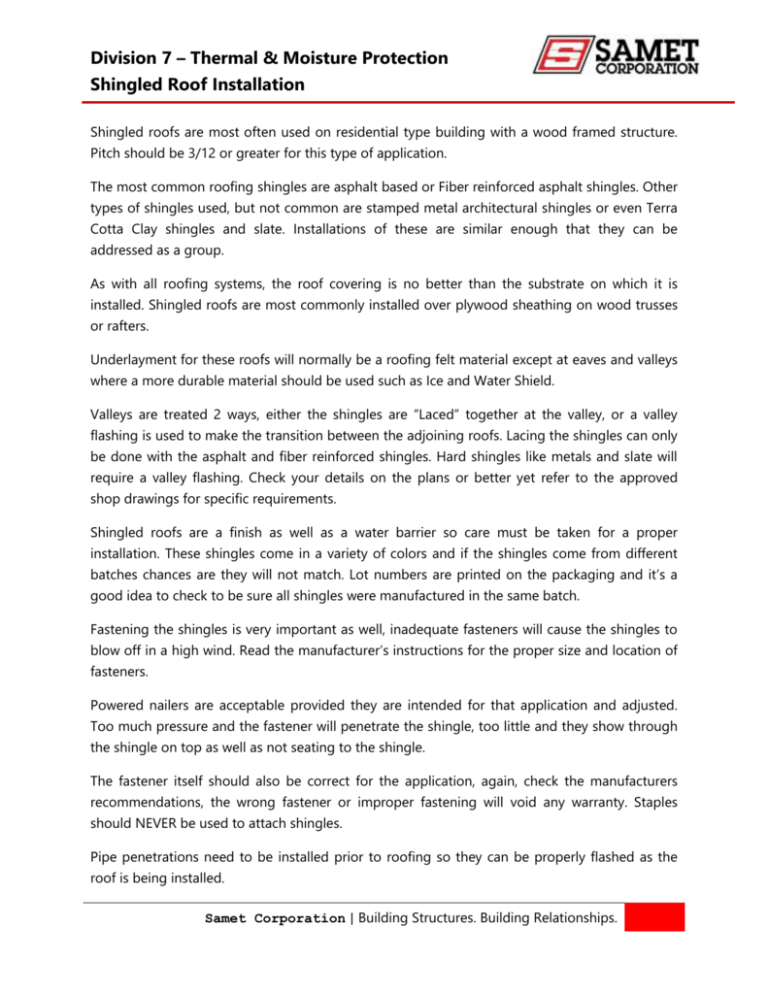
Division 7 – Thermal & Moisture Protection Shingled Roof Installation Shingled roofs are most often used on residential type building with a wood framed structure. Pitch should be 3/12 or greater for this type of application. The most common roofing shingles are asphalt based or Fiber reinforced asphalt shingles. Other types of shingles used, but not common are stamped metal architectural shingles or even Terra Cotta Clay shingles and slate. Installations of these are similar enough that they can be addressed as a group. As with all roofing systems, the roof covering is no better than the substrate on which it is installed. Shingled roofs are most commonly installed over plywood sheathing on wood trusses or rafters. Underlayment for these roofs will normally be a roofing felt material except at eaves and valleys where a more durable material should be used such as Ice and Water Shield. Valleys are treated 2 ways, either the shingles are “Laced” together at the valley, or a valley flashing is used to make the transition between the adjoining roofs. Lacing the shingles can only be done with the asphalt and fiber reinforced shingles. Hard shingles like metals and slate will require a valley flashing. Check your details on the plans or better yet refer to the approved shop drawings for specific requirements. Shingled roofs are a finish as well as a water barrier so care must be taken for a proper installation. These shingles come in a variety of colors and if the shingles come from different batches chances are they will not match. Lot numbers are printed on the packaging and it’s a good idea to check to be sure all shingles were manufactured in the same batch. Fastening the shingles is very important as well, inadequate fasteners will cause the shingles to blow off in a high wind. Read the manufacturer’s instructions for the proper size and location of fasteners. Powered nailers are acceptable provided they are intended for that application and adjusted. Too much pressure and the fastener will penetrate the shingle, too little and they show through the shingle on top as well as not seating to the shingle. The fastener itself should also be correct for the application, again, check the manufacturers recommendations, the wrong fastener or improper fastening will void any warranty. Staples should NEVER be used to attach shingles. Pipe penetrations need to be installed prior to roofing so they can be properly flashed as the roof is being installed. Samet Corporation | Building Structures. Building Relationships. Division 7 – Thermal & Moisture Protection Shingled Roof Installation Adjacent walls, chimneys or curbs need to be flashed as the roof is being installed as well. If not done at the same time as roofing is installed the roofer will be required to remove portions of the roof to properly incorporate the flashing. This will add to the time it takes to install your roof and has the potential of added cost for out of sequence work. Accessories such as eave trim should be installed prior to shingle installation. At eaves to receive gutters, the shingle needs to overhang enough so that run off goes directly into the gutter with no leakage behind it. If not done correctly, this condition accelerates fascia rot. Ideally, you’ll want all trim boards in place prior to roof installation so your roofer will not have to guess at the proper overhang. In one case the trim boards had not been installed and the roofer assumed them to be the standard ¾ inch thick trim we normally use when in reality a 1 ½ inch thick trim was shown on the drawings. This was not communicated to the crew and the end result was the removal of all roofing at the edges so longer shingles could be installed at considerable cost to the roofing contractor. Even though the roofer fixed his mistake, it took much longer for the roof to be completed and the building dried in. Samet Corporation | Building Structures. Building Relationships.

